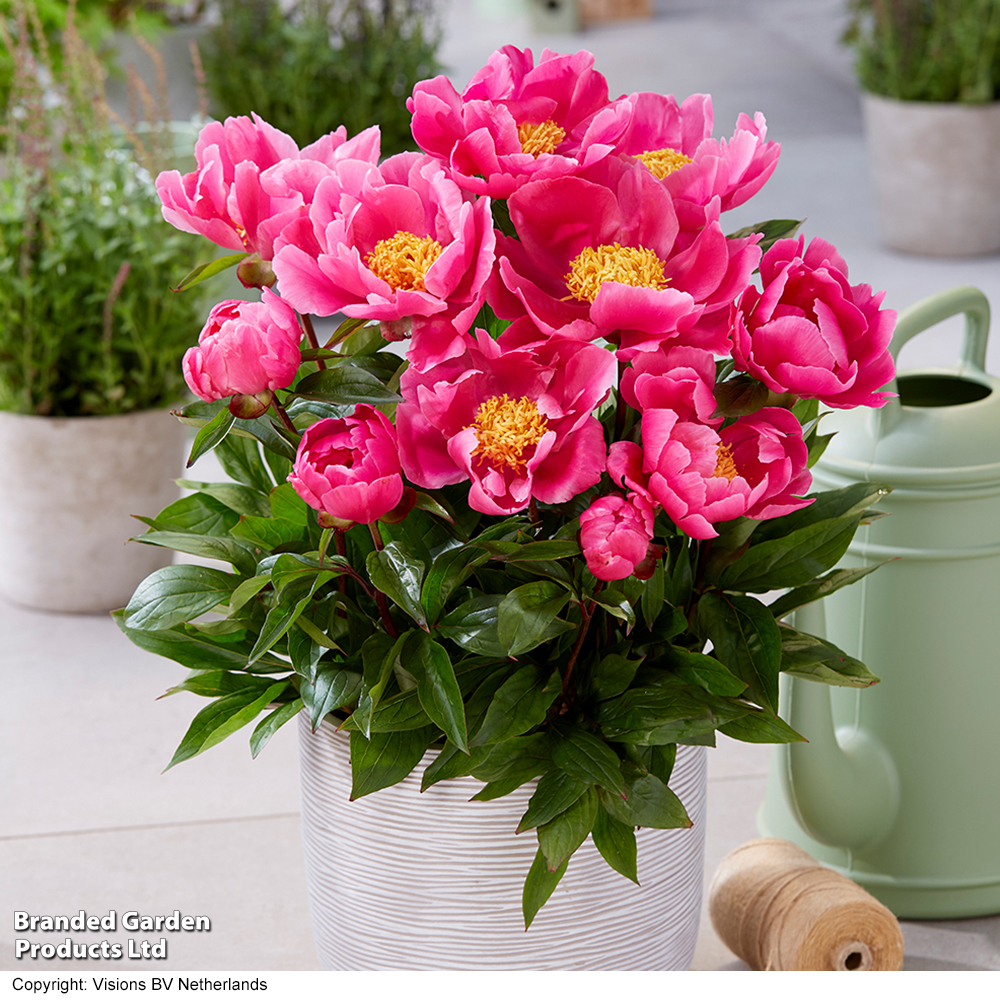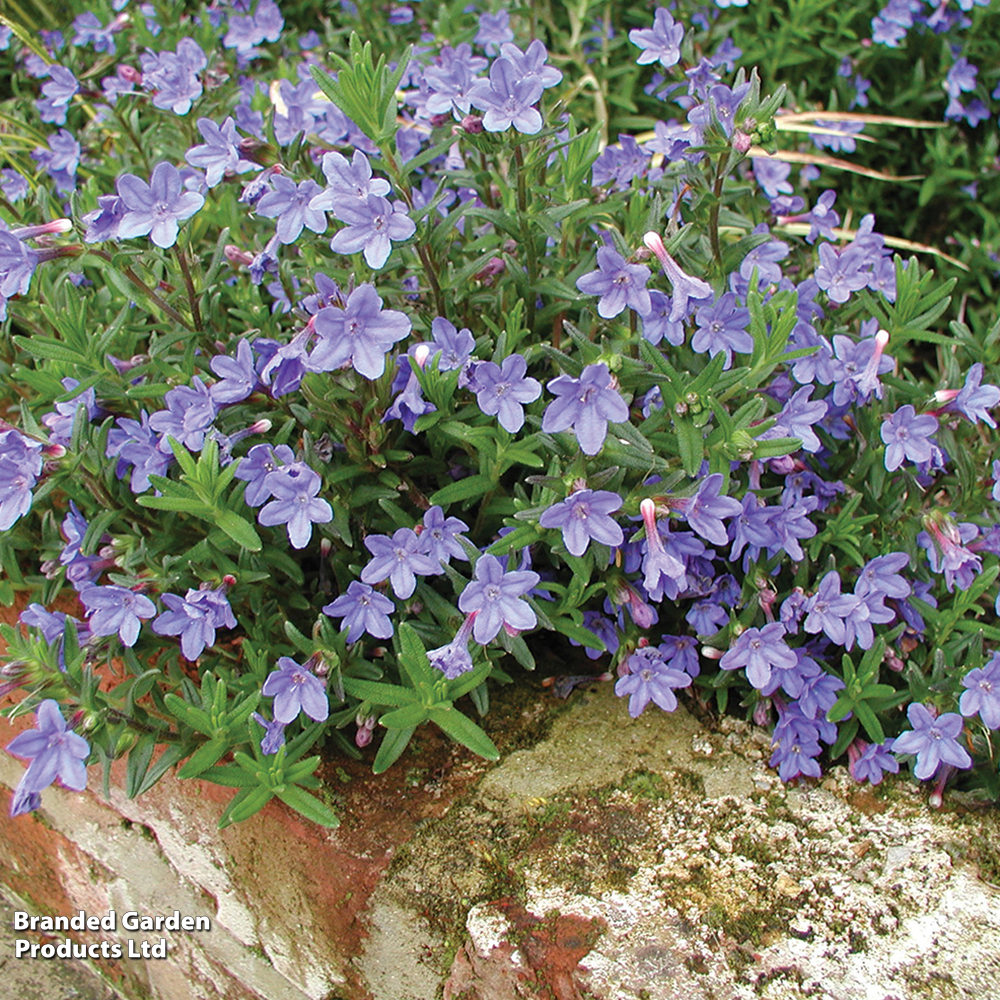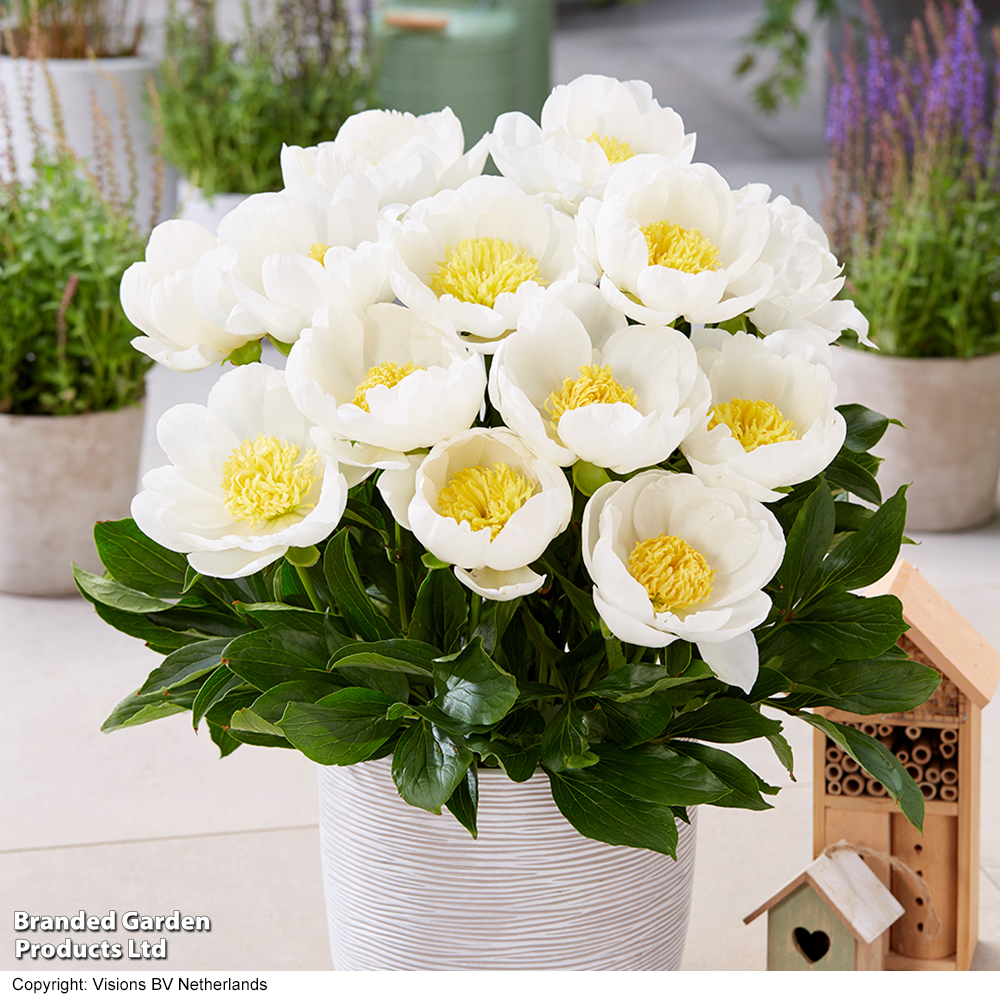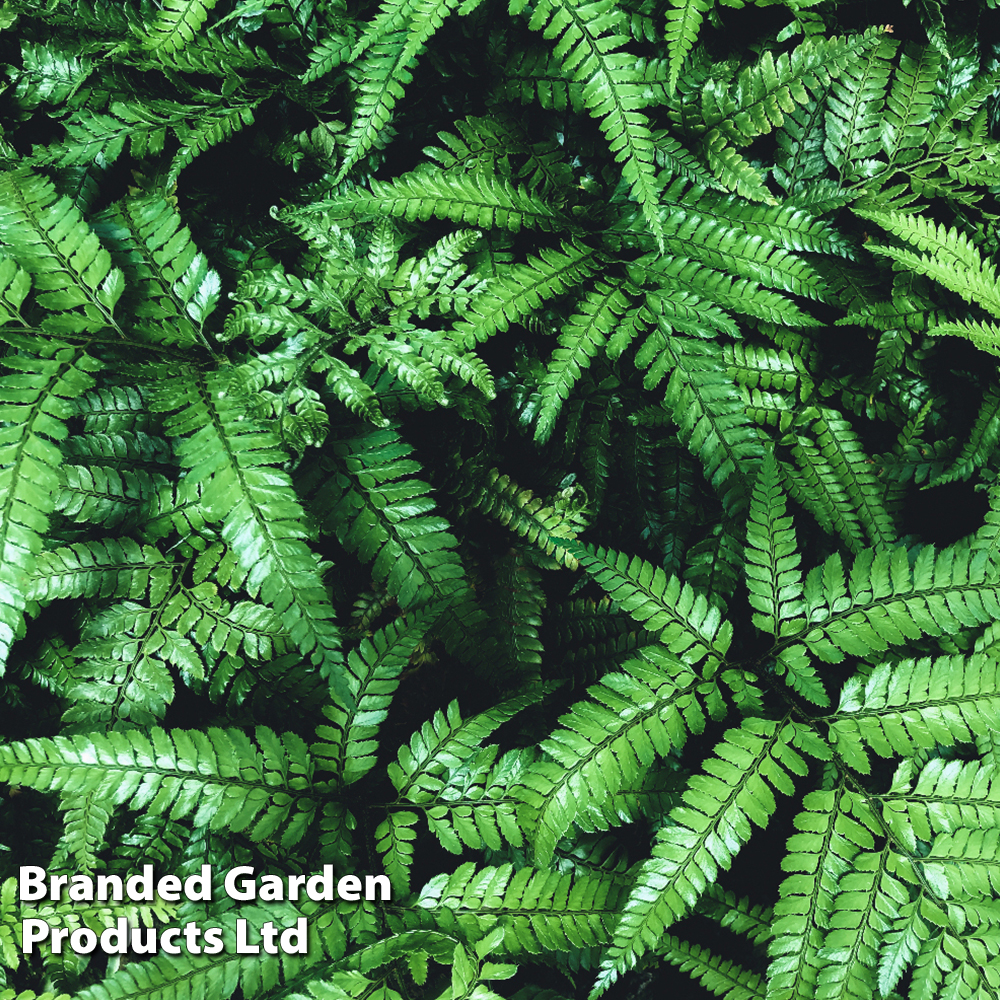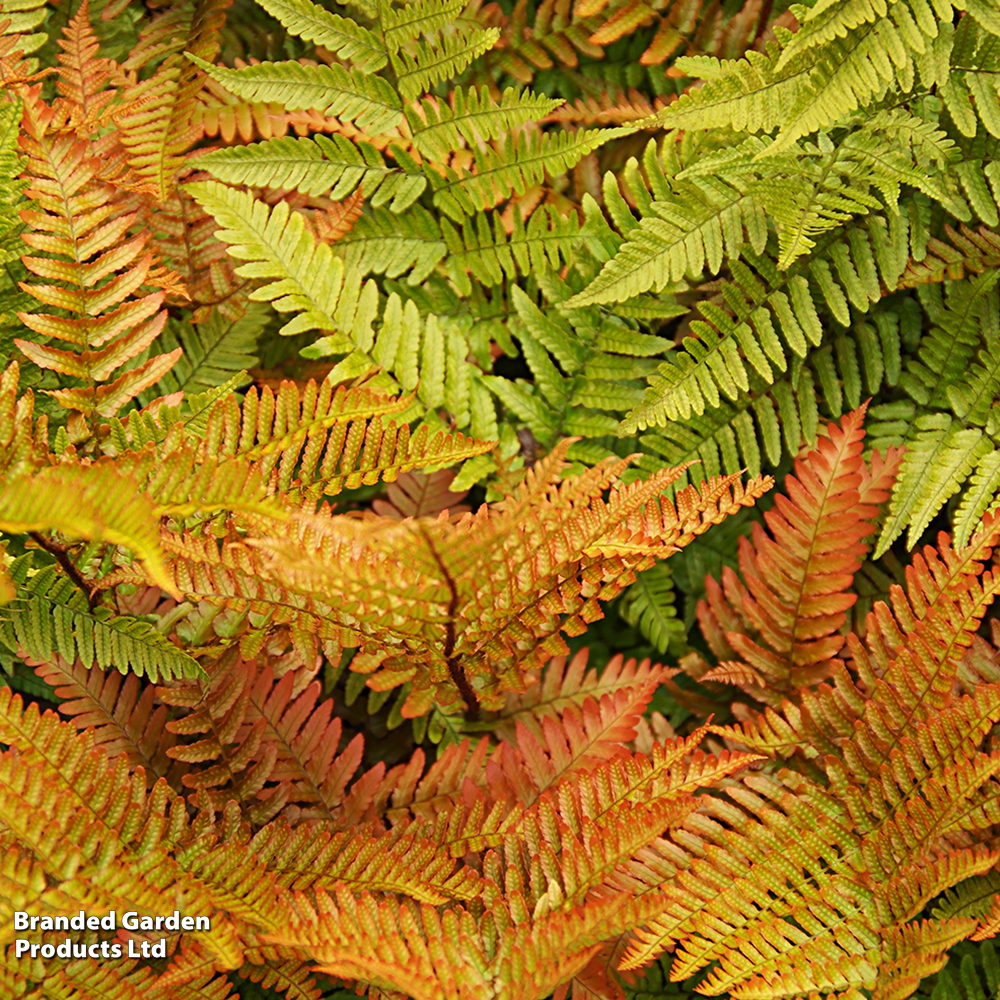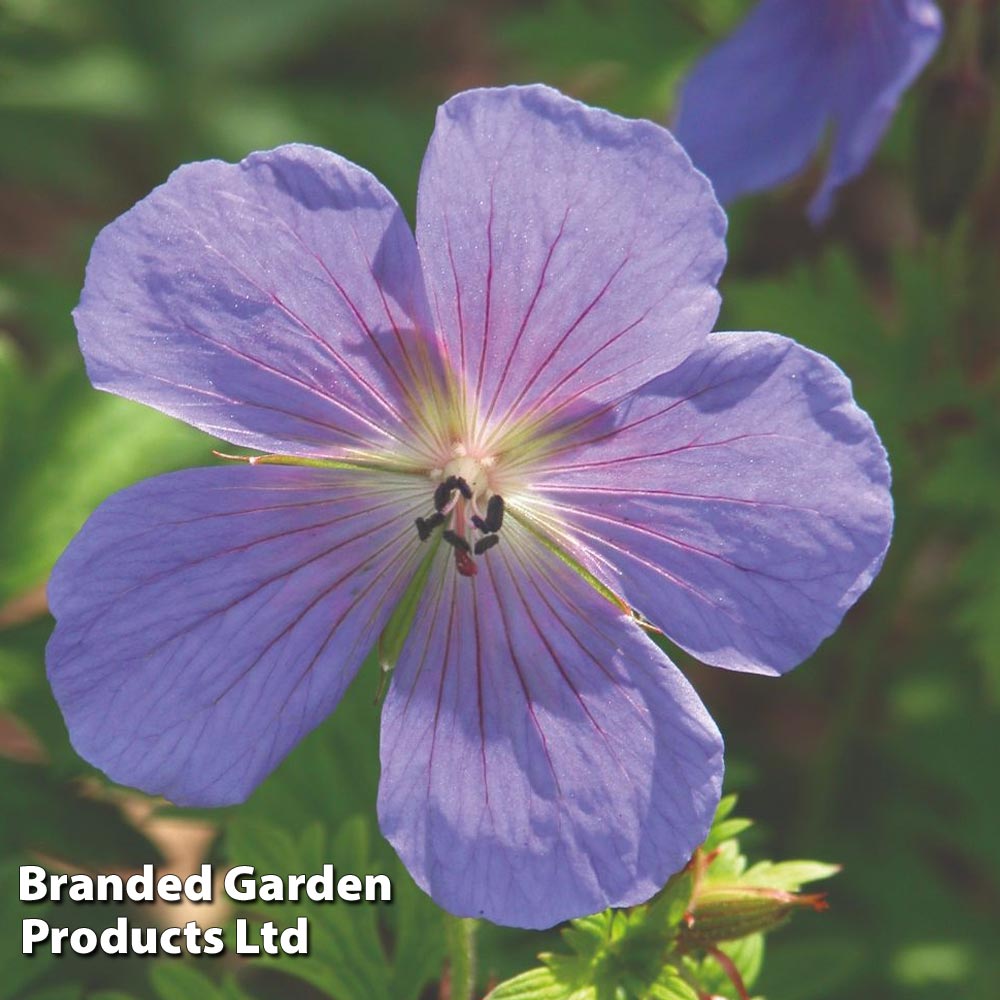Bring the elegance of peonies to even the smallest spaces with Peony Athens. While traditional herbaceous peonies are not suitable for pots, Peony Athens has been specially bred for successful container growth, flowering abundantly on a compact plant. This variety forms neat, bushy mounds of deep green, finely lobed leaves. Thanks to strong, sturdy stems, staking is unnecessary, and unlike traditional peonies where heavy blooms droop, the flowers of Peony Athens remain upright, displaying their bright, charming faces even in low containers. Despite its smaller size, Peony Athens produces large, semi-double blooms in abundance, with vibrant pink, delicately crinkled petals surrounding a central golden core. These herbaceous peonies are long-lived, offering stunning late spring to early summer displays year after year with minimal care. Whether planted in borders or containers, they add structure, glamour, and rich colour to your garden, and make excellent cut flowers. Height: 75cm (29in). Spread: 40cm (16in). Culinary note: The petals can be added to salads, lightly cooked and sweetened for a treat, or used to flavour punches. Peony water was once considered a delicacy, and the blooms can be floated in drinks.
Growing Information
Grow peonies in a sunny or semi shaded position. They prefer a well drained, rich fertile soil. This is best achieved by adding with plenty of well rotted manure or compost to the soil prior to planting, ensuring that it is mixed in thoroughly and deeply. Plant herbaceous peonies at a depth of around 5cm (2″) below the soil surface. Planting too deeply may delay flowering.
These bareroot peonies are lifted from the nursery field when dormant and sent to you in late autumn or spring for planting. They often look dead on arrival, but they are just resting in the dormant period and will establish quickly for a strong start in the garden come spring. Set out in prepared soil in holes wide enough and deep enough to lay out the roots. The crown should be planted no more than 2.5–5cm below the surface. Tread down the planting soil to knock out air pockets. Water well to settle. Apply a mulch to protect roots from cold temperatures. New growth will appear in spring. If conditions prevent immediate planting, set roughly into loose soil or a pot of compost (‘heeling in’) to protect the roots.

